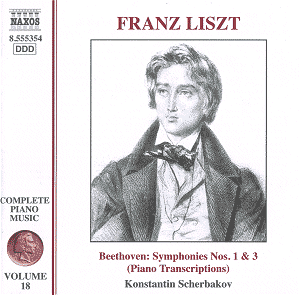 Composer: Johann Nepomuk Hummel (1778-1837)
Composer: Johann Nepomuk Hummel (1778-1837)
Works: Caprice op. 49, Variations sur un thème d’Armide de Gluck op. 57, Bagatelles op. 107 Nos. 1, 3, 5, Trois amusements op. 105 No. 2 “À l’Autrichienne,” Rondo op. 11, Polonaise op. 55
Performers: Joanna Trzeciak, piano
Recording: July 1996, Studio S1, Polish Radio, Warsaw
Label: Pavane ADW 7359 [68.04]
Johann Nepomuk Hummel, a bridge between the Classical and Romantic eras, occupies a unique place in the pantheon of composers. His works reflect a synthesis of his early training under Mozart and Haydn, as well as the romantic influences of Beethoven, culminating in a style that is both singular and evocative. This disc featuring Joanna Trzeciak offers a compelling exploration of Hummel’s piano repertoire, revealing the depth of his lyrical and virtuosic capabilities while illuminating the subtleties that make his music worthy of revival.
Trzeciak’s interpretation of the Caprice op. 49 opens with a semi-improvised theme that captures Hummel’s operatic flair. The dynamic gradients and dance rhythms employed throughout give the work an engaging momentum. Trzeciak navigates the intricate passages with a deft hand, particularly in the reflective telescoped recapitulation towards the end, where she successfully balances the technical demands with a lyrical expressiveness that Hummel so masterfully wove into his compositions. The caprice’s closing gallop is executed with both precision and exuberance, underscoring Hummel’s duality as a composer and performer.
The Variations on a theme from Gluck’s “Armide” op. 57 is another highlight, showcasing Hummel’s inventive spirit. Trzeciak’s approach to the subtle rhythmic changes and register shifts highlights the piece’s playful character. Her articulation in the imitative passages is particularly noteworthy, lending a buoyant atmosphere to the variations. The way she contrasts the coloristic elements with a more subdued expressiveness reveals Hummel’s proto-Romantic tendencies, suggesting a lineage that would eventually lead to Chopin. This foreshadowing is not merely incidental; it resonates throughout the disc, particularly in the way Trzeciak shapes the climaxes and lyrical lines.
The Bagatelles op. 107 present a varied landscape of character, with the Scherzo’s briskness and classical references juxtaposed against the nobility of the fifth Bagatelle, which possesses a distinctly aloof contrapuntal quality. However, it is the third Bagatelle, “La Comptemplazione,” that stands out for its rich chromaticism and searching emotional depth. Trzeciak’s nuanced phrasing and layered decorative passagework bring forth the piece’s inherent beauty, suggesting a sensitivity that goes beyond mere technical execution.
Hummel’s “À l’Autrichienne,” with its charming Viennese waltz characteristics, is delivered with a delightful sense of humor, while the Polonaise op. 55 showcases Hummel’s lyrical gift complemented by a Beethovenian storminess. Trzeciak’s interpretations are marked by a clear understanding of the folk influences inherent in the music, particularly in her handling of the dance rhythms that are a hallmark of Hummel’s style. However, there are moments—such as the runs in the Polonaise—that could benefit from a more daring execution, as well as a slightly brisker tempo in the fifth Bagatelle to enhance its liveliness.
The sound quality of the recording, while somewhat clangorous, does not detract significantly from the overall experience. The engineering captures the essence of the piano, albeit lacking the clarity one might hope for in a more modern production. Despite these minor drawbacks, the disc remains an essential addition to the repertoire of Hummel, serving as both an introduction for newcomers and a satisfying revisit for admirers of his work.
Trzeciak’s performance is a testament to Hummel’s multifaceted genius, successfully merging technical proficiency with a profound understanding of the music’s emotional landscape. This disc not only advocates for Hummel’s place in the canon but also highlights the potential for further exploration of his oeuvre. Hummel emerges here not merely as a virtuoso but as a composer whose lyrical and innovative spirit continues to resonate with contemporary audiences.



